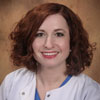
There are many things that make an office run like clockwork. Every part of the office is important, from the phones being answered, to the glasses being sold, but the patient flow of the office can make or break your workday.
Step One: Excellent Communication
The first step for good office flow is communication. There has to be accurate and organized communication from the front desk to the technicians to the doctor to the opticians. Each employee needs to be responsible for understanding why this patient is here, and what has to be done to properly handle this patient's needs. Initially, the optometric technician will be the main person controlling the flow of the office and will be giving directions on each patient. Expert communication skills are a must.
Step Two: Be Prepared
The second step: Be Prepared. As an optometric technician, I begin my day going through the charts for the day. I compare the charts with the schedule to see who may take a little longer. Be aware of toric and multifocal fittings, patients needing dilation, and patients that may need more detailed testing.
Step Three: Ask Pertinent Questions
Third important step, ask pertinent questions. All of the questions asked during the work up will help the doctor and the optician determine what will be best suited for the patient, whether it is contacts or glasses, or if the patient needs extra testing. The more details the optometric technician can give the better. Be direct. "How are you seeing today?" "How are your current glasses or contacts working for you?" "Have you noticed any changes or problems since your last eye exam?" Asking appropriate questions in a timely manner helps greatly with chair time and the doctors stress level.
Step Four: Be Organized
Fourth, organizational skills are a must. Transitioning a patient from one area of the office to another can be complicated. This is where being organized comes into play. You have to keep track of each patient. Taking notes to help your memory is always a good idea. I always like to have an up to date schedule with me to make notes on throughout the day. "Ms. Brown is dilating in room 2," "Mr. Smith is working with the optician," "Ms. Jones is ready for the doctor in 3." These types of notes can free your mind so you can focus on the task at hand and will allow for easier patient transition.
Step Five: Smart Triage
Fifth important step, make sure all emergency patients are triaged appropriately. Find areas in the schedule that will allow plenty of time for patient care, but also not backing up currently scheduled patients.
Step Six: Summarize the Patient's Visit
Lastly, when a patient is being escorted to check out, the person doing the checkout should be given a summary of what is going on with the patient, such as "Ms. Smith was dilated," this lets the receptionist at checkout to give dilation glasses. Or "Ms. Smith is trying contacts." This informs the receptionists they need to schedule a follow up appointment. This also gives the patient finalization of their appointment. This helps a patient understand and feel included in in their vision care. Explain to the patient they will be called when their glasses come in, or that we will recall them for their next visit.
There are several steps to make patient flow go as planned. There will be times when a wrench is thrown into the plan; but if you are well prepared the flow of patients will not be disrupted greatly. Just by following the six important steps; excellent communication, be prepared, ask pertinent questions, be organized, smart triage, and summarize the patients visit. These steps will help patient flow be smooth and well organized. This leads to smooth running office, a less stressful work environment and very impressed patients.

Linda Hardy is a Certified Optometric Technician and Certified Ophthalmic Assistant. She is also ABO certified and NCLE certified and a Licensed Dispensing Optician in the state of Georgia. She has been with a private optometry practice in Newnan, Georgia for 15 years as the clinical coordinator.
Linda graduated from Georgia Medical Institute as a Registered/Certified Medical Assistant in April 1996. She began working with a group of ophthalmologists as an ophthalmic assistant. She switched her career to optometry in 1999. She has had the opportunity to become knowledgeable in many areas of the eye field from assisting to opticianry.
Linda Hardy and her husband have five children. She enjoys spending time with her family, exercising, reading and volunteering in her community.












